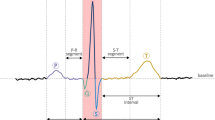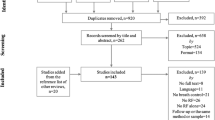Abstract
Nonlinear analysis of heart rate variability (HRV) can give additional information about the autonomic control of heart rate. This study applied the method of approximate entropy (ApEn) in a heart failure population (CHF). The influence of time series length and of adding noise on approximate entropy was examined. The method was applied to study HRV of a healthy population (N = 21) and an end stage heart failure population (N = 21). One-hour recordings during day and night were used. Regular signals showed ApEn values of 0, while adding noise increased ApEn values. Brownian noise (1/f2-noise) seemed to have the least influence on ApEn. Both heart failure patients and the control group showed no circadian difference in ApEn. Heart failure patients showed a loss of circadian variation in time and frequency domain HRV indices. ApEn was higher in the CHF population during the night. We present values of approximate entropy of heart failure patients. Heart failure results in loss of circadian variation. Higher values of ApEn in the CHF population indicate a more erratic heart rate.
Similar content being viewed by others
REFERENCES
Aubert AE and Ramaekers D. Neurocardiology: The benefits of irregularity. The basics of methodology, physiology and current clinical applications. Acta Cardiol 54(3): 107-120, 1999.
Aubert AE, Ramaekers D, Beckers F, Breem R, Denef C, Van de WF, and Ector H. The analysis of heart rate variability in unrestrained rats. Validation of method and results. Comput Methods Programs Biomed 60(3): 197-213, 1999.
Cohn JN, Levine TB, Olivari MT, Garberg V, Lura D, Francis GS, Simon AB, and Rector T. Plasma norepinephrine as a guide to prognosis in patients with chronic congestive heart failure. N Engl J Med 311(13): 819-823, 1984.
Costa M, Pimentel IR, Santiago T, Sarreira P, Melo J, and Ducla-Soares E. No evidence of chaos in the heart rate variability of normal and cardiac transplant human subjects. J Cardiovasc Electrophysiol 10(10): 1350-1357, 1999.
Fojt O and Holcik J. Applying nonlinear dynamics to ECG signal processing. Two approaches to describing ECG and HRV signals. IEEE Eng Med Biol Mag 17(2): 96-101, 1998.
Goldberger AL, Mietus JE, Rigney DR, Wood ML, and Fortney SM. Effects of head-down bed rest on complex heart rate variability: Response to LBNP testing. J Appl Physiol 77(6): 2863-2869, 1994.
Grassberger P and Procaccia I. Measuring the strangeness of strange attractors. Physica D 9: 189-208, 1983.
Hartikainen JE, Tahvanainen KU, and Kuusela TA. Short-term measurements of heart rate variability. In Malik M, Ed, Clinical Guide to Cardiac Autonomic Tests. Dordrecht: Kluwer, 1998, pp 149-176.
Kaplan DT, Furman MI, Pincus SM, Ryan SM, Lipsitz LA, and Goldberger AL. Aging and the complexity of cardiovascular dynamics. Biophys J 59(4): 945-949, 1991.
Katz MJ. Fractals and the analysis of waveforms. Comput Biol Med 18(3): 145-156, 1988.
Kleiger RE, Miller JP, Bigger JT, Jr, and Moss AJ. Decreased heart rate variability and its association with increased mortality after acute myocardial infarction. Am J Cardiol 59(4): 256-262, 1987.
Lin LY, Lin JL, Du CC, Lai LP, Tseng YZ, and Huang SK. Reversal of deteriorated fractal behavior of heart rate variability by betablocker therapy in patients with advanced congestive heart failure. J Cardiovasc Electrophysiol 12(1): 26-32, 2001.
Malik M and Camm A. Heart Rate Variability. Armonk, NY: Futura, 1995.
Malliani A. Principles of Cardiovascular Neural Regulation in Health and Disease. Boston: Kluwer, 2000.
Peng CK, Havlin S, Hausdorff JM, Mietus JE, Stanley HE, and Goldberger AL. Fractal mechanisms and heart rate dynamics. Long-range correlations and their breakdown with disease. J Electrocardiol 28( Suppl): 59-65, 1995.
Persson PB and Wagner CD. General principles of chaotic dynamics. Cardiovasc Res 31(3): 332-341, 1996.
Pincus SM. Approximate entropy as a measure of system complexity. Proc Natl Acad Sci USA 88(6): 2297-2301, 1991.
Pincus SM, Cummins TR, and Haddad GG. Heart rate control in normal and aborted-SIDS infants. Am J Physiol 264(3, pt 2): R638-R646, 1993.
Pincus SM and Goldberger AL. Physiological time-series analysis: What does regularity quantify? AmJ Physiol 266(4, pt 2): H1643-H1656, 1994.
Pincus SM and Viscarello RR. Approximate entropy: A regularity measure for fetal heart rate analysis. Obstet Gynecol 79(2): 249-255, 1992.
Rosenstein MT, Collins JJ, and De Luca CJ. A practical method for calculating the largest Lyapunov exponents from small data sets. Physica D 65: 117-134, 1993.
Sapoznikov D, Luria MH, and Gotsman MS. Detection of regularities in heart rate variations by linear and nonlinear analysis: Power spectrum versus approximate entropy. Comput Methods Programs Biomed 48: 201-209, 1995.
Stein KM, Lippman N, and Kligfield P. Fractal rhythms of the heart. J Electrocardiol 24 ( Suppl): 72-76, 1992.
Task Force of the European Society of Cardiology and the North American Society of Pacing and Electrophysiology. Heart rate variability: Standards of measurement, physiological interpretation and clinical use. Circulation 93(5): 1043-1065, 1996.
Wolf A, Swift JB, Swinney HL, and Vastano JA. Determining Lyapunov exponents from a time series. Physica D 16: 285-317, 1985.
Yamamoto Y and Hughson RL. On the fractal nature of heart rate variability in humans: Effects of data length and beta-adrenergic blockade. Am J Physiol 266(1, pt 2): R40-R49, 1994.
Yeragani VK, Srinivasan K, Vempati S, Pohl R, and Balon R. Fractal dimension of heart rate time series: An effective measure of autonomic function. J Appl Physiol 75(6): 2429-2438, 1993.
Author information
Authors and Affiliations
Rights and permissions
About this article
Cite this article
Beckers, F., Ramaekers, D. & Aubert, A.E. Approximate Entropy of Heart Rate Variability: Validation of Methods and Application in Heart Failure. Cardiovascular Engineering 1, 177–182 (2001). https://doi.org/10.1023/A:1015212328405
Issue Date:
DOI: https://doi.org/10.1023/A:1015212328405




